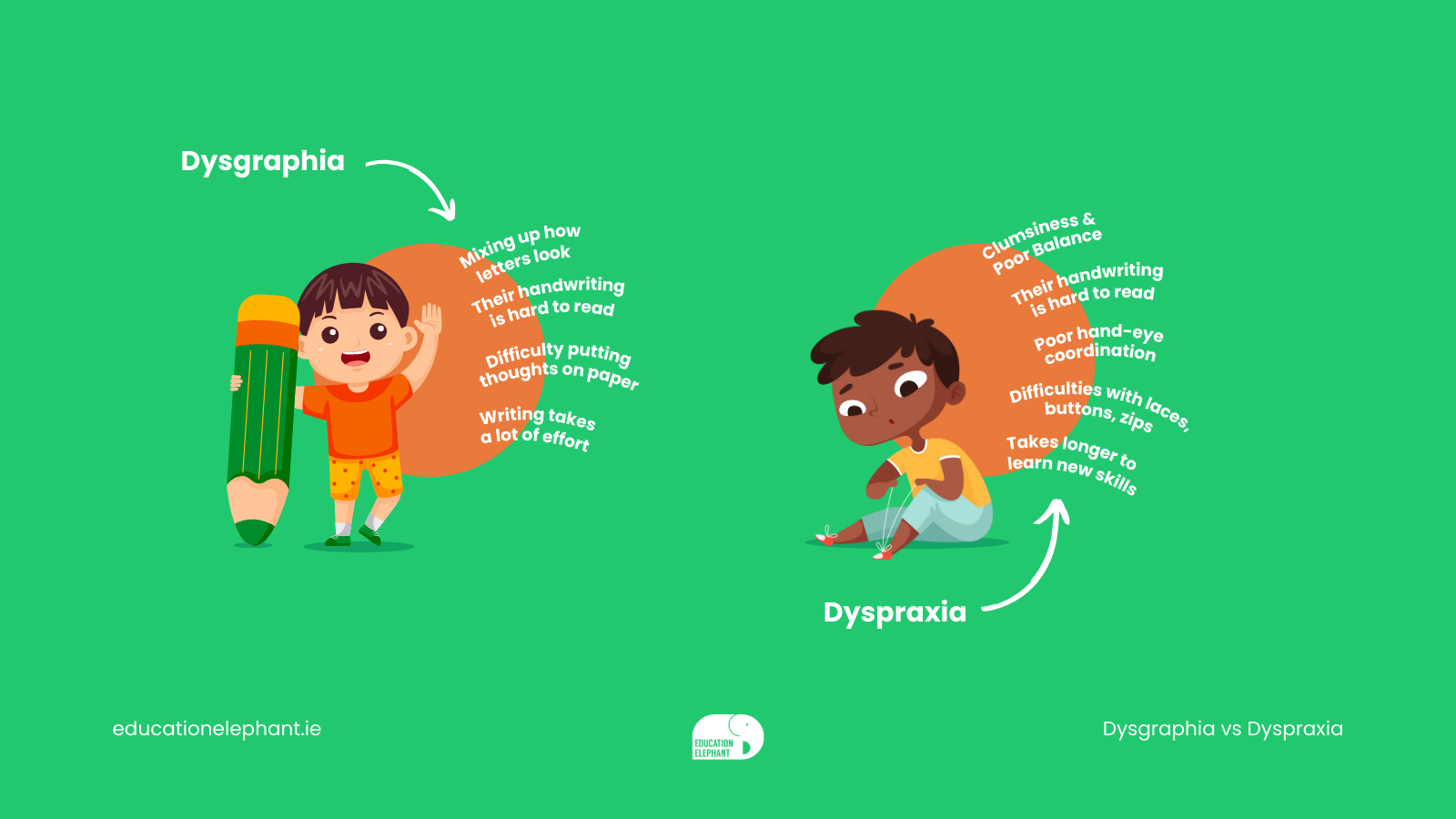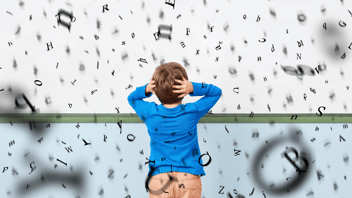What is the Difference Between Dysgraphia and Dyspraxia?

Dyspraxia and Dysgraphia can cause similar or overlapping struggles with writing and fine motor skills. Still, they're two distinct conditions, even though they can co-occur in some kids.
What is Dysgraphia?
Dysgraphia is a learning disability that affects writing and the coordination of the small muscles of the hands, wrists, and fingers (fine motor skills). People with Dysgraphia usually struggle with writing and forming letters, as well as writing along a straight line and spelling words correctly. Unlike Dyslexia, which affects language processing, people with Dysgraphia have difficulty in how their mind processes motor skills and information.

Facts about Dysgraphia:
- Few statistics have been developed on Dysgraphia as the disorder is severely under-researched
- Studies have shown that 5-20% of students are affected by Dysgraphia; however, it does decrease with age.
- Commonly, Dysgraphia occurs comorbidly with Autism, Asperger's Syndrome, Tourette's Syndrome or ADHD.
- Having Dysgraphia does not affect IQ or intelligence.
- Writing is a stratified process, meaning a child must overcome other learning obstacles before proficiently writing.
- Boys are more commonly affected than girls (75% Boys)
- Students will usually have an excellent declarative memory (facts/previous experience), but an impaired procedural memory (subconscious ability to perform tasks)
Five Types of Dysgraphia:
Dyslexic Dysgraphia
- Writing is sometimes illegible.
- Handwriting is legible when copied.
- Poor spelling
- It does not necessarily coincide with Dyslexia; however, the two disabilities can occur in the same individual.
- Below-average fine motor skills
- Weak dexterity (hand agility)
- Unexplained clumsiness
- Illegible handwriting
- The poor grip of pen/pencil and poor letter formation
- Spelling ability is not impaired
- The student does not understand spacing between words
- Handwriting may be illegible
- They struggle with writing on lined paper and spacing
- Poor writing and spelling when dealing with unknown words
- Struggles to memorise phonemes (distinct units of sound in a language)
- Decoding words becomes difficult
- Average spelling ability when sound patterns are known
- It most commonly occurs in English-speaking children as the language is less phonetic than most
- A scarce form of Dysgraphia
Activities to help children with Dysgraphia:
- Write letters more prominent than they would. Use different materials, for example, finger paint, sand, clay, shaving foam, or whipped cream. An activity like this solidifies new pathways in a child's mind to help them remember this information for the future.
- Practice pinching things to increase fine motor strength when writing.
- Encourage speaking first, allowing kids to get their thoughts and ideas out first without focusing their attention on putting pen to paper.
- Trace letters into your child/student's back or palm so they can 'feel' the letters.
How to accommodate Dysgraphia in the classroom:
- Use pencil grips and writing aids.
- Incorporate technology as a substitute for handwriting to allow written expression to flow more easily.
What is Dyspraxia?
Dyspraxia refers to a learning disability that affects movement. Dyspraxic people usually struggle with both fine and gross motor skills. As a result, their motor planning and coordination appear clumsy and awkward when walking and speaking. Dyspraxia is often a comorbid disorder occurring in conjunction with other disorders, most commonly ADHD, Dysgraphia, Sensory Processing Disorders, and Autism. Dyspraxia affects up to 8% of the population; however, it can often go undiagnosed or unnoticed, depending on the severity of individual cases.
.jpg?width=630&height=354&name=1%20(1).jpg)
Facts about Dyspraxia:
- Dyspraxia is a motor planning disorder - not a muscle deficit.
- Depending on the case severity, an individual can have one or all types of Dyspraxia.
- It affects approximately 8-10% of the population
- Boys are more commonly affected than girls (70% Boys)
- Having Dyspraxia does not affect one's intelligence
Three types of Dyspraxia:
Oral Dyspraxia
- Difficulty executing non-speech sounds/movements, i.e. blowing, licking, swallowing
- Preference for either soft or hard foods
Verbal Dyspraxia
- Speech disorder
- Effects on the sequencing of movements required to speak
Motor Dyspraxia
- Difficulty planning and executing the correct movements to perform specific tasks
- Uncoordinated and clumsy movements
- Struggles with performing tasks on command
Activities to help children with Dyspraxia:
- Trampolining to improve balance and strengthen gross motor skills - ensure that your trampoline has a net and the proper safety precautions are in place.
- Get your child doing Martial Arts Classes. These classes help to develop gross motor skills and coordination and teach discipline in a fun, active environment, which is beneficial for children who may also have ADHD.
- Playing with bubbles - get your child to try and pop as many as they can as quickly as possible. You can also use balloons instead of bubbles.
- Get your child to skip rope. The child can skip rope along with a small, individual skipping rope or as a group activity at home or school with a longer rope. Skipping rope activities help to strengthen hand-eye coordination and concentration.
How to accommodate Dyspraxia in the Classroom:
- Similarly to Dysgraphia, find alternatives to handwriting, i.e. teaching touch typing and implementing it.
- Emphasise step-by-step directions to tasks
- Allow for extra time on timed activities and assignments.

Proper diagnoses and early intervention by an Educational Psychologist will help your child, and student get the most out of their education and, most importantly, enjoy learning. Every child can be successful with the proper guidance and goals.
Eirim: The National Assessment Agency provides assessment services for schools and students across the country to identify the learning needs of all students.

.png?width=352&name=blog_images%20(4).png)

.png?width=352&name=maths_homework%20(2).png)